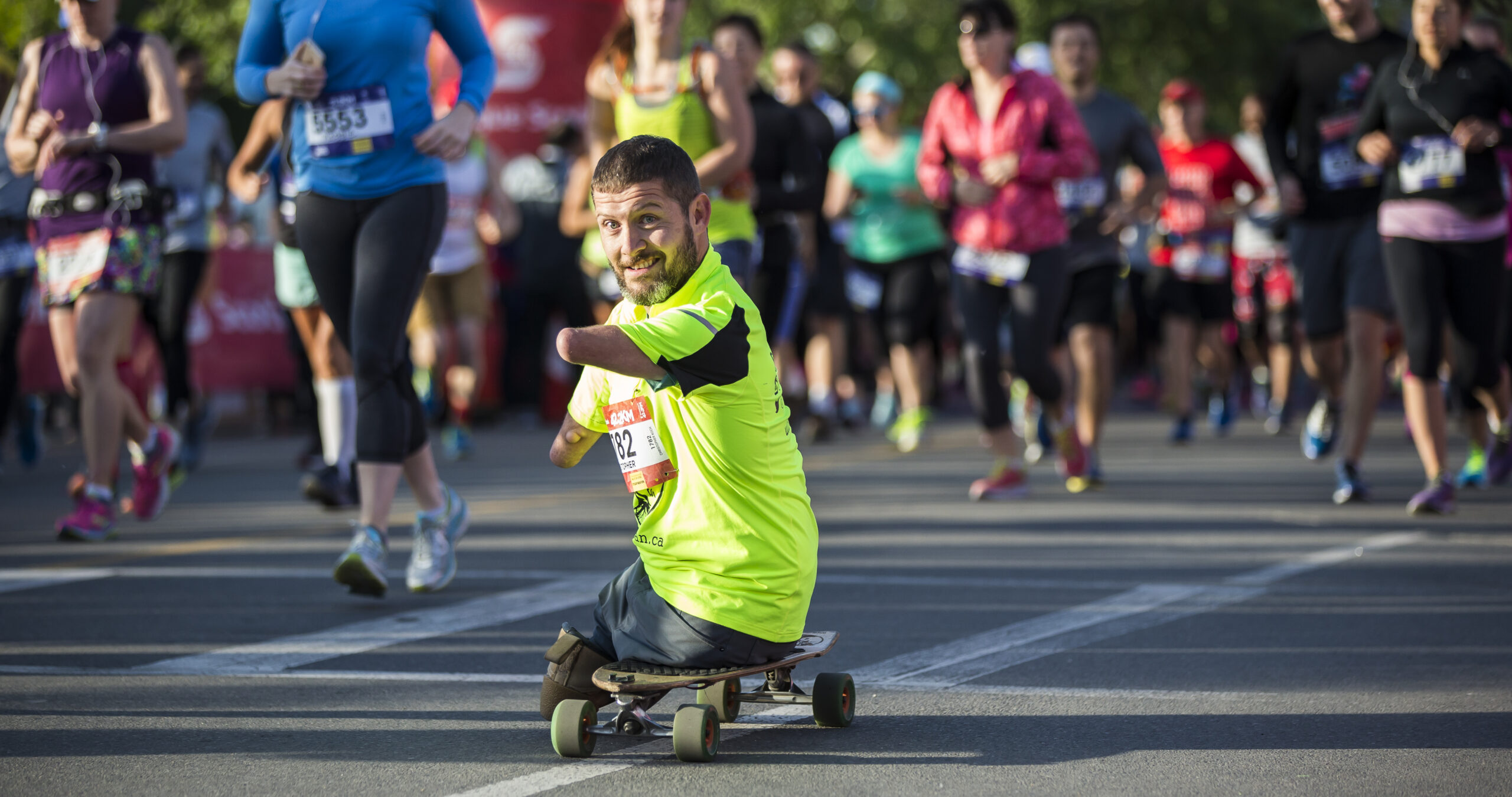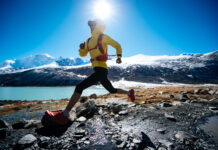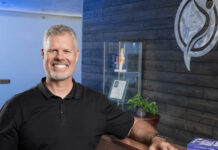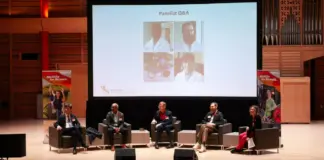One of the great gifts running will give you—if you allow it— is the people who enter your orbit, who you may never have otherwise met.
I could name hundreds of fantastic acquaintances who have enriched my life over the last 19 years, most of whom would have remained unknown to me had we not connected over this common thing we love. I have friends in their late 80s and early 20s. I run with people of all colours and religions and once belonged to a club in Dubai that boasted members with 40+ languages. Occasionally, I get to move with some of my favourite humans, who happen to be adaptive athletes.
Running shorts and long runs are the great equalizer, and humanity is at its finest when we share a common goal.
“I love being part of the race environment and challenging myself just the way that the runners do. I’m able to focus on what
I can still do,” Andrea Lytle Peet tells me.
I met Peet in February 2023 at Running USA, an industry conference, when she was awarded an emerging leader scholarship. She had just celebrated living with ALS for 10 years. Yes. Celebrated! She continues to defy odds after being diagnosed in 2014. Also known as Lou Gehrig’s disease, most people don’t make it to the five-year mark. But in the past decade, Peet has participated in 56 marathons on her three-wheel tricycle, wrote a book, made a documentary and inspired many a community with her story in the time since her diagnosis. But not every race has welcomed her to the start line.
“I understand when races say no because of narrow trails with two-way traffic, off-road sections, curbs, or other terrain issues,
but I hope that more races will start from a place of inclusion—as in, how can we accommodate this participant?” she says.
“I know it’s a little extra legwork, but it means so much to have the experience of reclaiming my identity as an athlete.”
In recent years, there have been notable strides in improving accessibility from neighbourhood five-kilometre runs to the Majors, but as an industry insider, I believe we have a long way to go.
Routes are only as accessible as the cities we reside in and unfortunately neither are designed, or modified, to accommodate different needs. This would include ensuring that routes are wheelchair accessible, providing ample space for guide runners and in some cases, service animals, and making sure that aid stations are equipped to assist participants with disabilities.
Organizers are increasingly aware of the need for accessible facilities and providing training for volunteers to assist participants with special needs.
After a year of consultation, Calgary Marathon recently launched resources for adaptive athletes, and included a drop down in the registration page for participants to self-identify if they would benefit from additional resources like sign language at the start or connection to a guide. It’s a work in progress and we are adding to it as we learn more.
“I don’t bother signing up before I have the thumbs up,” Chris Koch explains, “I don’t want to go through the embarrassment of being told it’s not okay to participate.”
Koch has participated in 17 marathons on four continents since 2016 using his longboard which is his primary mobility, because he was born without arms and legs. Despite his willingness to educate and work with organizers, he’s been turned down a lot. “It’s been various levels of trying to convince race directors of my abilities,” he says.
Koch always starts with the back of the pack, wears brightly coloured clothing, stays wide on uphill and downhill and says the toughest part for him has been that a lot of races finish on grass, It’s good resistance training but after a marathon pushing in the soft grass is a bit of a challenge.”
It’s these types of special considerations race organizers have a difficult time accommodating—even after we become aware of them. We rely on participants to behave in a specific and largely uniform way to execute a safe event at a high level. It’s difficult to make an exception and find resources to support them—and we don’t want to over promise on something we aren’t sure we can deliver. But many of us are trying.
“I am just there for my medal and my own personal achievement,” says Koch. “It doesn’t impact the other participants who are trying to BQ [Boston Qualifier] and has no [negative] impact on other runners.”
Increasing the visibility of athletes with disabilities normalizes their presence and inspires others. Highlighting stories like Koch racing around the globe and Peet’s achievement of 50 marathons in 50 states is incredibly empowering to others.
“If I can do some of these big races, my hope is other people with disabilities are inspired and see it as something they can do,” says Koch, who has raised over $50,000 for a variety of charities through his participation.
Big races like the New York Marathon. Both were accepted through the special accommodation program and are in training for one of the world’s largest races, that takes place on November 3rd.
Despite advancements, there is room for growth and these are some of the ways Run Calgary is working to make our events more inclusive: comprehensive training including understanding different types of disabilities and how to assist effectively; conducting accessibility audits to identify areas needing improvement; acting on feedback from participants with disabilities, and inclusive design when launching new events.
Creating accessible and inclusive events is about fostering a culture of respect, equality, and celebration. Let’s strive to ensure that every individual, regardless of their abilities, can take their place at the starting line and cross it with pride.
“I just want to feel like the athlete that I am, racing to the best of my abilities,” says Peet.
Photography – Dave Holland / Signe Clayton Photography
You may also like: Unstoppable
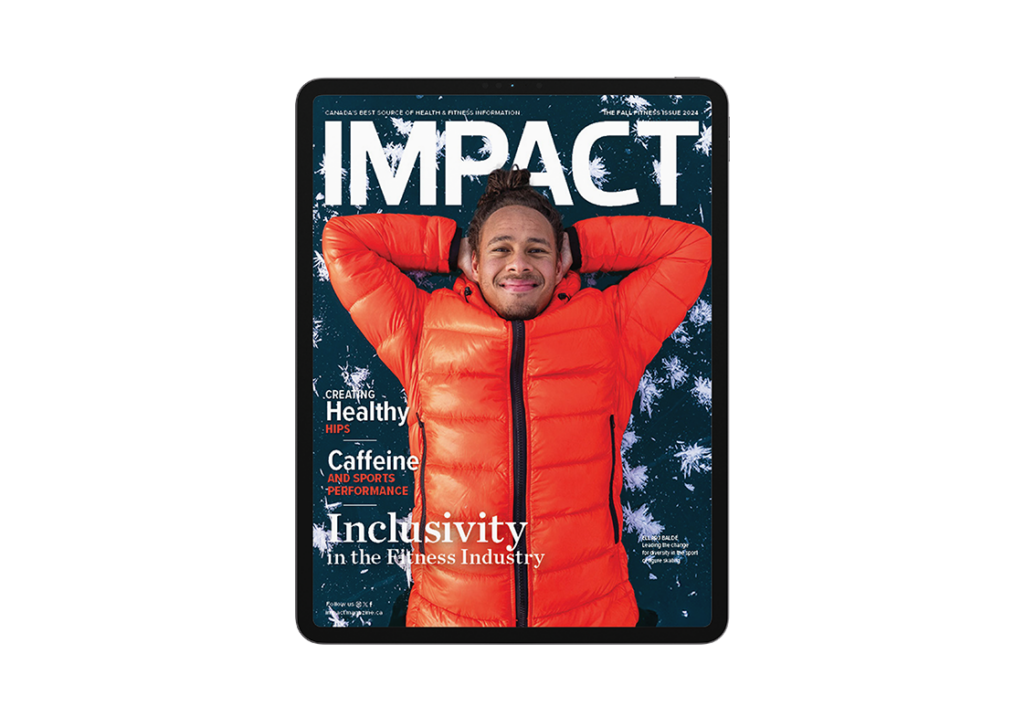
Read This Story in Our 2024 Fall Fitness Issue
IMPACT Magazine Fall Fitness Issue 2024 featuring Canadian figure skating icon Elladj Baldé, Paralympic shot putter Greg Stewart, Indigenous rights trail running Anita Cardinal. Adventure travel with some amazing winter getaways, strengthen your back and hips, find the art of joyful movement, Inclusivity in the fitness industry and so much more!


